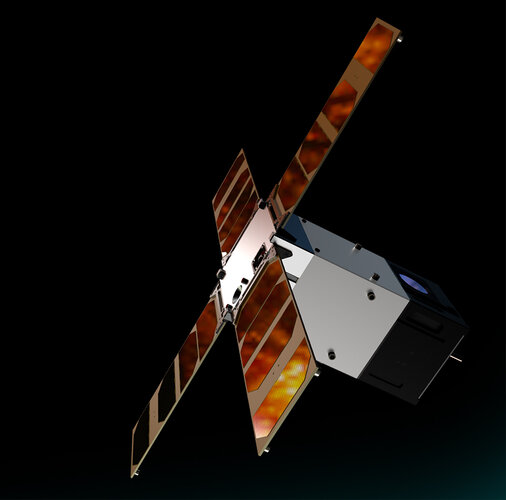Around the same size as two big Harry Potter paperbacks, ESA’s Sun-watching Sunstorm CubeSat has produced its first solar X-ray spectrum, coming just over a week after its launch to orbit aboard a Vega rocket.
CubeSats are miniaturised satellites based on standardised 10 cm boxes. Sunstorm is a ‘2-unit’ CubeSat, hosting an innovative solar X-ray spectrometer called the X-ray Flux Monitor for CubeSats (XFM-CS).
A Finnish team led by the ISAWARE company developed the miniaturised XFM-CS instrument.
Its function is to detect the X-ray pulses produced by solar flares – explosive releases of magnetic energy seen as enormous flashes on the Sun’s surface. These give rise in turn to space weather, threatening satellites and terrestrial power and communications networks, even aircraft on polar flights.
“We are very happy to have acquired our first telemetry from the instrument, showing it is in excellent health,” comments Juhani Huovelin, Chairman of ISAWARE. “It is important to note that this is just a preliminary look for now, but its stability and data quality are very promising.”
Aboa Space Research Oy, Oxford Instruments Technologies and Talvioja Consulting also collaborated on XFM-CS.
The Sunstorm CubeSat was manufactured by Finland’s Reaktor Space Lab, and the mission funded by Business Finland and and the FLY element of ESA’s General Support Technology Programme, dedicated to the early space testing of promising new technologies.
Sunstorm continues its in-orbit operations and the final stages of its commissioning, explains Janne Kuhno of Reaktor Space Lab: “The early operations went very quickly and we managed to stablish bi-directional S-Band communications on the first pass, perform platform avionics health checks, deploy all four solar panels and acquire Sun pointing attitude for payload operations.”
“Acquiring our first solar X-ray spectrum so quickly after launch is a major achievement in itself,” notes Camille Pirat, ESA Technical Officer for the Sunstorm mission.
“It is also good news for our forthcoming space weather mission, also carrying a version of the XFM-CS instrument – which was previously known as Lagrange but is currently the subject of a naming competition.”
A second ESA CubeSat was also launched with Sunstorm, explains Roger Walker, ovserseeing ESA's Technology CubeSats: “The radiation-detecting RadCube, developed by a team from Hungary, Poland the UK, is also undergoing commissioning, with its first results expected next month.”



 Image:
First light from Sunstorm CubeSat
Image:
First light from Sunstorm CubeSat